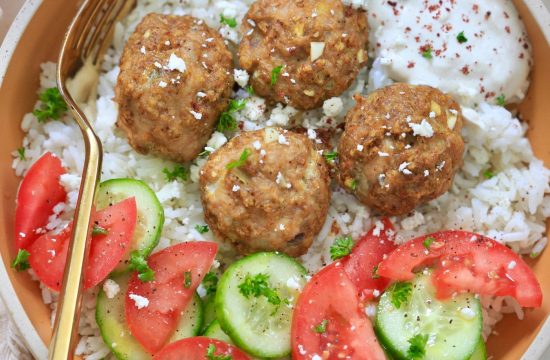The 2nd chapter of Sharirasthana of Sushruta Samhita is named as Sukrasonita Suddhi Shariram Adhyaya. This chapter deals with Purity of semen and menstrual blood.
अथातः शुक्रशोणितशुद्धिशारीरं व्याख्यास्यामः ||१||
यथोवाच भगवान् धन्वन्तरिः ||२||
We will expound the chapter by name Sukrasonita Sudhi Sarira purification of semen and menstrual blood; as revealed by the venerable Dhanvantari.
Dusta Sukra – vitiated semen
वात-पित्त-श्लेष्म-कुणप -ग्रन्थि-पूतिपूय-क्षीण-मूत्रपुरीषरेतसः प्रजोत्पादने न समर्था भवन्ति ||३||
Below mentioned kinds of sukra – semen (sperms) will not be capable of producing the offspring –
– Vata – sukra vitiated by vata
– Pitta – sukra vitiated by pitta
– Kapha – sukra vitiated by kapha
– Kunapa – sukra having smell of cadaver
– Granthi – sukra having clots / clumps or small coagulated masses
– Puti – sukra which is foul smelling
– Puya – sukra mixed with pus
– Ksina – sukra which has decreased in quantity / quality
– Mutra – PurisaDusta – sukra vitiated by urine and feces
Symptoms of Vitiated Semen
तेषु वातवर्णवेदनं वातेन, पित्तवर्णवेदनं पित्तेन, श्लेष्मवर्णवेदनं श्लेष्मणा, कुणपगन्ध्यनल्पं च रक्तेन, ग्रन्थिभूतं श्लेष्मवाताभ्यां, पूतिपूयनिभं पित्तश्लेष्मभ्यां, क्षीणं प्रागुक्तं पित्तमारुताभ्यां, मूत्रपुरीषगन्धि सन्निपातेनेति |
तेषु कुणपग्रन्थिपूतिपूयक्षीणरेतसः कृच्छ्रसाध्याः, मूत्रपुरीषरेतसस्त्वसाध्या इति ||४||
Among these;
| Nature of vitiation of sukra | Features of vitiated sukra |
| Vitiated by vata | Will have color and discomfort / pain / symptoms as produced by aggravated vata |
| Vitiated by pitta | Will have color and discomforts / pain / symptoms as produced by aggravated pitta |
| Vitiated by kapha | Will have color and discomfort / pain / symptoms as produced by kapha |
| Vitiated by rakta– blood | Will have kunapagandha – cadaveric smell,
Quantity of semen will be increased (or severe increase in cadaveric smell) |
| Vitiated by kapha and vata together | Will be granthibhuta – semen will be formed in thick masses / matted / granulated / forms clots or clumps |
| Vitiated by pitta and kapha together | Will resemble putipuya – bad smelling pus |
| Vitiated by pitta and vata together | Will be kshina i.e. decreased in quantity |
| Vitiated by sannipata i.e. aggravation of all the three doshas together | Will have the smell of urine and feces |
Prognosis – Among these types of contaminated sukra –
– Kunapagandha, Granthibhuta, Putipuya and Kshina Sukra conditions are Krichra Sadhya – treatable with difficulty
– Sukra contaminated with / vitiated by Mutra – urine and Purisa – feces is incurable
Dusta Artava – Vitiated menstrual blood
आर्तवमपि त्रिभिर्दोषैः शोणितचतुर्थैः पृथग्द्वन्द्वैः समस्तैश्चोपसृष्टमबीजं भवति; तदपि दोषवर्णवेदनादिभिर्विज्ञेयम् |
तेषु कुणपग्रन्थिपूतिपूयक्षीणमूत्रपुरीषप्रकाशमसाध्यं, साध्यमन्यच्चेति ||५||
Even the artava – menstrual blood (ovum) of the below mentioned kinds will be incapable of producing children –
– Artava vitiated by vata, pitta, kapha or rakta separately
– Artava vitiated by their (vata, pitta, kapha and rakta) combination in two or
– Artava vitiated by all of them (vata, pitta, kapha and rakta)
The involvement of doshas in vitiating artava should be identified by the colors and discomforts / pains or symptoms (related to particular dosha or doshas) present in the artava.
Even among these vitiation of artava, just like in sukra, the below mentioned kinds of artava should be considered as incurable –
– Kunapa Gandhi – artava having smell of cadaver
– Granthibhuta – artava with clots or clumps
– Putipuya – artava having smell like bad smelling pus,
– Kshina – artava which has decreased in quantity and quality
– Mutra purisha prakasham – mixed or vitiated with urine and feces
The other kinds of artava (vitiated by doshas) are curable
Sukra Sodhana- methods of Purification of semen
भवन्ति चात्र-
तेष्वाद्याञ् शुक्रदोषांस्त्रीन् स्नेहस्वेदादिभिर्जयेत् |
क्रियाविशेषैर्मतिमांस्तथा चोत्तरबस्तिभिः ||६||
पाययेत नरं सर्पिर्भिषक् कुणपरेतसि |
धातकीपुष्पखदिरदाडिमार्जुनसाधितम् ||७||
पाययेदथवा सर्पिः शालसारादिसाधितम् |
ग्रन्थिभूते शटीसिद्धं पालाशे वाऽपि भस्मनि ||८||
परूषकवटादिभ्यां पूयप्रख्ये च साधितम् |
प्रागुक्तं वक्ष्यते यच्च तत् कार्यं क्षीणरेतसि ||९||
विट्प्रभे पाययेत् सिद्धं चित्रकोशीरहिङ्गुभिः [३] |
स्निग्धं वान्तं विरिक्तं च निरूढमनुवासितम् ||१०||
योजयेच्छुक्रदोषार्तं सम्यगुत्तरबस्तिना |११|
| Kind of Sukra Dusti – vitiation of semen / sperms | Treatment |
| Sukra vitiated by vata
Sukra vitiated by pitta Sukra vitiated by kapha |
Therapies like Snehana – oleation, Swedana – sudation etc. (including vamana – emesis, virechana – purgation, vasti – enema etc) should be administered.
Uttara Basti / Uttara Vasti – is the special and best treatment in these cases. |
| Kunapa Gandha Sukra – semen having smell of dead body | Ghrta (ghee) prepared with Dhataki Puspa – flowers of Woodfordia fruticosa, Khadira – Acacia catechu, Dadima – Punica granatum (pomegranate) and Arjuna – Terminalia arjuna should be administered.
Ghee prepared with Salasaradi Gana group of herbs. |
| Granthibhuta Sukra – semen having clots or clumps | Ghrta prepared with Sati – Curcuma zedoaria / Hedychium spicatum
Ghrta prepared with Bhasma (ash) of Palasa – Butea monosperma |
| Putipuya Sukra – semen having smell of foul-smelling pus | Ghee prepared with Parusaka – Grewia asiatica and Vata – Ficus benghalensis |
| Ksina Sukra – semen decreased in quantity | Treatments told earlier and those which are going to be described later in chapter 26 should be administered |
| Purisa Dushta Sukra – semen contaminated / vitiated by feces or similar to feces in smell | Ghrta prepared with Citraka – Plumbago zeylanica, Ushira – Vetiveria zizanoides and Hingu – Ferula narthex – asafetida – should be administered |
Below mentioned therapies should be considered for treatment of persons suffering from disorders of sukra –
– Snehana – oleation
– Vamana – emesis
– Virechana – purgation
– Niruhavasti – decoction enema
– Anuvasanavasti – oil / unctuous enema
– Uttara vasti – enema administered through urethral route
Suddha Sukra Laksana – Features of pure semen
स्फटिकाभं द्रवं स्निग्धं मधुरं मधुगन्धि च ||११||
शुक्रमिच्छन्ति, केचित्तु तैलक्षौद्रनिभं तथा |१२|
Below mentioned are the features of suddha sukra – pure semen –
– Sphatikabha – resembles alum (white in color like sphatika)
– Drava – is liquid
– Snigdha – unctuous
– Madhura – sweet in taste
– Madhu Gandhi – has smell of honey
– Taila kshaudranibham – resembles oil or honey in appearance (according to other’s opinion)
The sukra with the above said features will be capable of producing offspring.
Artava Sodhana Vidhi – methods of purifying menstrual blood
विधिमुत्तरबस्त्यन्तं कुर्यादार्तवशुद्धये ||१२||
स्त्रीणां स्नेहादियुक्तानां चतसृष्वार्तवार्तिषु |
कुर्यात्कल्कान् पिचूंश्चापि पथ्यान्याचमनानि च ||१३||
ग्रन्थिभूते पिबेत् पाठां त्र्यूषणं वृक्षकाणि च |
दुर्गन्धिपूयसङ्काशे मज्जतुल्ये तथाऽऽर्तवे ||१४||
पिबेद्भद्रश्रियः क्वाथं चन्दनक्वाथमेव च |
शुक्रदोषहराणां च यथास्वमवचारणम् ||१५||
योगानां शुद्धिकरणं शेषास्वप्यार्तवार्तिषु |
अन्नं शालियवं मद्यं हितं मांसं च पित्तलम् ||१६||
| Kind of Artava Dusti – vitiation of menstrual blood / ovum | Treatment |
| Artava vitiated by vata
Artava vitiated by pitta Artava vitiated by kapha Artava vitiated by rakta |
Therapies ending with Uttara Vasti – enema given through vaginal / urethral route along with Snehana – oleation, Swedana – sudation etc. (including vamana – emesis, virechana – purgation, vasti – enema etc) should be administered.
Kalka – use of pastes of drugs and Pichu – gauze / diapers (to be kept in the vagina) and washing the vagina (with decoction of drugs). |
| Granthibhuta Artava – menstrual blood having clots or clumps | Decoction of Patha – Cissampelos pareira, Tryusana – Piper longum, Piper nigrum and Zingiber officinale and Vrksaka – Holerrhena antidysenterica should be given for drinking. |
| Durgandha, Putipuya, Majjatulya – menstrual blood foul smelling like corpse or foul-smelling pus or appearing like bone marrow | Decoction of Bhadrasriya (Sveta candana / Raktacandana) – Sandalwood should be administered for drinking. |
| For purifying remaining types of Artava (in other kinds of Artava vitiation) | Recipes which purify Sukra (semen) mentioned earlier should be used. |
Diet – In conditions of vitiation of artava, the foods prepared from Sali – rice and yava – barley, wine and meat which increases pitta should be used.
Suddha Artava Laksana – features of pure menstrual blood
शशासृक्प्रतिमं यत्तु यद्वा लाक्षारसोपमम् |
तदार्तवं प्रशंसन्ति यद्वासो न विरञ्जयेत् ||१७||
Artava with the below mentioned features is said to be pure in nature –
– Shasha asrkpratimam – resembles the blood of a rabbit or
– Laksha rasa upamam – resembles solution of lac
– Vaso naviranjayet – does not stain the cloth
Such artava presenting with above mentioned features is highly praised since it is pure in nature.
Asrgdara – Menorrhagia
तदेवातिप्रसङ्गेन प्रवृत्तमनृतावपि |
असृग्दरं विजानीयादतोऽन्यद्रक्तलक्षणात् ||१८||
असृग्दरो भवेत् सर्वः साङ्गमर्दः सवेदनः |
तस्यातिवृत्तौ दौर्बल्यं भ्रमो मूर्च्छा तमस्तृषा ||१९||
दाहः प्रलापः पाण्डुत्वं तन्द्रा रोगाश्च वातजाः |
तरुण्या हितसेविन्यास्तमल्पोपद्रवं भिषक् ||२०||
रक्तपित्तविधानेन यथावत् समुपाचरेत् |२१|
Asrgdhara is a condition in which the same artava i.e. menstrual blood –
– comes out in excessive quantity and
– flows out even apart from the regular cycle of period
The feature of such blood which flows out in asrgdhara is different from the normal menstrual blood.
Below mentioned are the symptoms of all kinds of Asrgdhara, due to profuse bleeding –
– severe body pains,
– profuse bleeding
– weakness,
– giddiness,
– fainting,
– appearance of darkness in front of the eyes,
– thirst,
– feeling of burning sensation,
– delirium,
– anemia / pallor,
– stupor,
– diseases of vata origin
Raktapitta Vidhana – Asrgdhara should be treated with treatments described for managing raktapitta i.e. bleeding disorders, in a young woman who is accustomed to only suitable foods and has fewer complications.
Nastartava – Amenorrhoea
दोषैरावृतमार्गत्वादार्तवं नश्यति स्त्रियाः ||२१||
तत्र मत्स्यकुलत्थाम्लतिलमाषसुरा हिताः |
पाने मूत्रमुदश्विच्च दधि शुक्तं च भोजने ||२२||
क्षीणं प्रागीरितं रक्तं सलक्षणचिकित्सितम् |
तथाऽप्यत्र विधातव्यं विधानं नष्टरक्तवत् ||२३||
Menstrual flow ceases to appear when the channels become obstructed by doshas.
In such cases, the below mentioned foods and drinks will be beneficial and hence prescribed –
– matsya – fishes
– kulattha – horse-gram
– amla – sour things,
– tila – sesame,
– masha – black-gram,
– sura – beer,
– gomutra – urine of cow,
– udasvit – dilute buttermilk,
– dadhi – curds / yoghurt,
– sukta – vinegar
The symptoms and treatment for decrease of blood have been enumerated earlier (Su 16/212). The same treatment should be followed and adopted even in the treatment of decrease of menstrual blood.
एवमदुष्टशुक्रः शुद्धार्तवा च ||२४||
When the above said treatments are adopted, the sukra and artava of the persons will become pure and healthy.
Ritumaticarya – regimen of menstruating woman
ऋतौ प्रथमदिवसात् प्रभृति ब्रह्मचारिणी दिवास्वप्नाञ्जनाश्रुपातस्नानानुलेपनाभ्यङ्गनखच्छेदनप्रधावनहसनकथनातिशब्दश्रवणावलेखनानिलायासान् परिहरेत् |
किं कारणं? दिवा स्वपन्त्याः स्वापशीलः, अञ्जनादन्धः, रोदनाद्विकृतदृष्टिः, स्नानानुलेपनाद्दुःखशीलः, तैलाभ्यङ्गात् कुष्ठी, नखापकर्तनात् कुनखी, प्रधावनाच्चञ्चलः, हसनाच्छ्यावदन्तौष्ठतालुजिह्वः, प्रलापी चातिकथनात्, अतिशब्दश्रवणाद्बधिरः, अवलेखनात् खलतिः, मारुतायाससेवनादुन्मत्तो गर्भो भवतीत्येवमेतान् परिहरेत् |
दर्भसंस्तरशायिनीं करतलशरावपर्णान्यतमभोजिनीं हविष्यं, त्र्यहं च भर्तुः संरक्षेत् |
ततः शुद्धस्नातां चतुर्थेऽहन्यहतवासःसमलङ्कृतां कृतमङ्गलस्वस्तिवाचनां भर्तारं दर्शयेत् |
तत् कस्य हेतोः? ||२५||
पूर्वं पश्येदृतुस्नाता यादृशं नरमङ्गना |
तादृशं जनयेत् पुत्रं भर्तारं दर्शयेदतः ||२६||
ततो विधानं पुत्रीयमुपाध्यायः समाचरेत् |
कर्मान्ते च क्रमं ह्येतमारभेत विचक्षणः ||२७||
The woman in menstruation should follow the below mentioned right from the first day of menstrual period –
She should observe celibacy i.e. keep away from copulation and any other kind of sexual activities.
Apart from this she should also avoid –
– bathing
– anointing with oils / oil bath,
– nail paring
– excessive running, talking or laughing,
– hearing loud sounds / music
– roughly combing her hairs,
– exposure to heavy breeze
– excessive exertion
What is the reason?
Indulgence in the above said things would create the below mentioned undesired impact on the child that would be born –
| Activity in which the woman gets indulged | Effect on the child that would be born |
| Day sleep | The child would always be sleepy |
| Using collyrium | Child would be blind |
| Too much weeping | Child will have defective vision |
| Bathing and anointing | Child will be miserable always |
| Oil bath | Child will suffer from skin disorders / leprosy |
| Nail paring | Child will have bad and defective nails |
| Too much running | The child will be confused (unsteady mind, fickle) |
| Too much (loudly) laughing | The teeth, lips, palate and tongue of the child becomes black in color |
| Excessively speaking | The child becomes excessively talkative (lamenting, chattering, delirium) |
| Hearing too much sounds or sounds of high intensity | The child becomes deaf |
| Roughly combing the hairs | Child will not have hairs (become bald) |
| Exposure to heavy breeze and too much exertion | Child will have severe mental agitation |
Therefore, these activities should be avoided by the woman.
She should do the below mentioned for three days –
– sleep on a mat made up of darbha grass
– eat sacred food i.e. foods which are fit to be eaten on certain festival occasions – she should eat such foods with her hand or in mud plates (earthen saucers), leaf plates (plates made up of leaves of trees) and such others,
– avoid seeing her husband
She should do the below mentioned the next day, the fourth day –
– take purifying bath,
– put on new clothes,
– wear ornaments and look beautiful,
– perform auspicious rites,
– hear benedictory hymns and then
– see her husband
Why should she do this?
The woman should see her husband only and not any other man because she will give birth to a son of similar features to any man she sees first after taking a purifying bath after her periods.
Vyavaya Kala – suitable days for copulation
ततोऽपराह्णे पुमान् मासं ब्रह्मचारी सर्पिःस्निग्धः सर्पिःक्षीराभ्यां शाल्योदनं भुक्त्वा मासं ब्रह्मचारिणीं तैलस्निग्धां तैलमाषोत्तराहारां नारीमुपेयाद्रात्रौ सामभिरभिविश्वास्य; विकल्प्यैवं चतुर्थ्यां षष्ठ्यामष्टम्यां दशम्यां द्वादश्यां चोपेयादिति पुत्रकामः ||२८||
एषूत्तरोत्तरं विद्यादायुरारोग्यमेव च |
प्रजासौभाग्यमैश्वर्यं बलं च दिवसेषु वै ||२९||
अतः परं पञ्चम्यां सप्तम्यां नवम्यामेकादश्यां च स्त्रीकामः; त्रयोदशीप्रभृतयो निन्द्याः ||३०||
The husband who had followed brahmacharya i.e. celibacy and kept himself away from copulation for a period of one month should consume foods consisting of boiled rice mixed with ghee, along with milk and ghee in the afternoon.
Similarly, the woman who has followed celibacy and has been lubricated with oil should consume foods containing more of oil and black gram.
Indulgence in copulation – At night time, the husband should engage himself with his wife for copulation. He should do so by pleasing her with sweet words. The act should be done on fourth, sixth, eighth, tenth or twelfth days by those desirous of begetting a son. It should be preceded with chanting of hymns by the priests.
The couple should indulge in copulation on the fifth, seventh, ninth or eleventh day if they desire to beget a daughter. Any day after the thirteenth day is considered to be despicable (inauspicious or unsuitable).
Even among these days which have been mentioned, those days in succeeding order would bestow –
– longevity,
– good health,
– more offspring,
– wealth and
– good strength (to the child)
Vyavaya Nisiddha Kala – days forbidden for copulation
तत्र प्रथमे दिवसे ऋतुमत्यां मैथुनगमनमनायुष्यं पुंसां भवति, यश्च तत्राधीयते गर्भः स प्रसवमानो विमुच्यते; द्वितीयेऽप्येवं सूतिकागृहे वा; तृतीयेऽप्येवमसम्पूर्णाङ्गोऽल्पायुर्वा भवति; चतुर्थे तु सम्पूर्णाङ्गो दीर्घायुश्च भवति |
न च प्रवर्तमाने रक्ते बीजं प्रविष्टं गुणकरं भवति, यथा नद्यां प्रतिस्रोतः प्लाविद्रव्यं प्रक्षिप्तं प्रतिनिवर्तते नोर्ध्वं गच्छति तद्वदेतद्द्रष्टव्यम् |
तस्मान्नियमवतीं त्रिरात्रं परिहरेत् |
अतः परं मासादुपेयात् ||३१||
Below mentioned are the effects of having copulation on the first four days of menstruation cycle
| Day of copulation | Effect on the would be born child |
| First day of menstruation | Destroys the lifespan
The fetus would die even before its birth if conception takes place |
| Second day of menstruation | Same effect as above (same effect – if done in post-delivery period / puerperium) |
| Third day of menstruation | Fetus is not well / fully developed and will also have shorter span of life |
| Fourth day of menstruation | Fetus will be developed and will also have longevity |
What will happen if copulation takes place during menstruation?
Just like a floating substance put on flowing water comes down instead of going upwards, the seed / sperm entering the uterus during active menstruation will not yield the fruits i.e. it does not form the fetus. This is the reason that copulation should, as a rule, be avoided during the first three days of a woman’s menstrual cycle. After the first three days, copulation may resume and continue for up to one month.
Pumsavana- rite to beget a son
लब्धगर्भायाश्चैतेष्वहःसु लक्ष्मणावटशुङ्गसहदेवाविश्वदेवानामन्यतमां क्षीरेणाभिषुत्य त्रींश्चतुरो वा बिन्दून् दद्याद्दक्षिणे नासापुटे पुत्रकामायै [१] , न च तान्निष्ठीवेत् ||३२||
On the same day the conception has been confirmed, 3-4 drops of juice of the below mentioned herbs should be macerated with milk and instilled into the right nostril of the woman desiring to have a son –
– Lakshmana
– Vata Srunga
– Sahadeva
– Visvadeva or such other plants
The woman should be advised not to spit the medicine if it comes into her mouth.
Garbhotpatti- formation of embryo-
ध्रुवं चतुर्णां सान्निध्याद्गर्भः स्याद्विधिपूर्वकम् |
ऋतुक्षेत्राम्बुबीजानां सामग्र्यादङ्कुरो यथा ||३३||
The below mentioned four things would certainly give rise to the formation of fetus if they come together in a proper way, just like Coming together in the proper way the four things gives rise to the formation of the fetus surely,
- Rtu – proper time for conception, fertile phase of menstrual cycle of the woman (season)
- Kshetra – uterus (field)
- Ambu – rasa i.e. essence of food of mother which is supplied to the fetus for its proper development (water)
- Bija – sperm and ovum (seed)
These four should come together just like a proper season, field, water and seed come together at the right time for formation of a plant.
एवं जाता रूपवन्तः सत्त्ववन्तश्चिरायुषः |
भवन्त्यृणस्य मोक्तारः सत्पुत्राः पुत्रिणे हिताः ||३४||
Below mentioned are the features of the son born in this manner –
– Good appearance
– Good mind
– Longevity of life
– Redeems his father from debts
– Beneficial to his parents
Garbha Varna – color of the fetus
तत्र तेजोधातुर्वर्णानां प्रभवः, स यदा गर्भोत्पत्तावब्धातुप्रायो भवति तदा गर्भं गौरं करोति, पृथिवीधातुप्रायः कृष्णं, पृथिव्याकाशधातुप्रायः कृष्णश्यामं, तोयाकाशधातुप्रायो गौरश्यामम् |
‘यादृग्वर्णमाहारमुपसेवते गर्भिणी तादृग्वर्णप्रसवा भवति’ इत्येके भाषन्ते |
तत्र दृष्टिभागमप्रतिपन्नं तेजो जात्यन्धं करोति, तदेव रक्तानुगतं रक्ताक्षं, पित्तानुगतं पिङ्गाक्षं, श्लेष्मानुगतं शुक्लाक्षं, वातानुगतं विकृताक्षमिति ||३५||
The color of the fetus is due to Tejo dhatu i.e. agni mahabhuta – the fire element.
The child of different colors will be born when the other dhatus or mahabhutas become predominant, as enlisted below.
| Dhatu / Mahabhuta predominance at the time of formation of fetus | Color manifested in the child / fetus |
| Ap – jala – water | White |
| Prithvi – earth | Black |
| Prithvi – earth and Akasa – ether | Black |
| Ap – water and Akasa – ether | Whitish blue |
According to some experts, the color of the fetus will be the same as the color of the foods that the mother (pregnant woman) eats.
Effect of mahabhutas on the color of eyes
| When tejo dhatu / agni mahabhuta – | Effect on the eye and vision of the child |
| Does not reach dritibhaga – area of vision | Born blind |
| Combines with blood | Brown colored eyes |
| Combines with kapha | White colored eyes |
| Combines with vata | Abnormal / irregular eyes |
भवन्ति चात्र-
घृतपिण्डो यथैवाग्निमाश्रितः प्रविलीयते |
विसर्पत्यार्तवं नार्यास्तथा पुंसां समागमे ||३६||
The artava in women flows out at the time of copulation with man just like a mass of ghee melts when placed in the vicinity of fire.
Yamala garbha- double foetus
बीजेऽन्तर्वायुना भिन्ने द्वौ जीवौ कुक्षिमागतौ |
यमावित्यभिधीयेते धर्मेतरपुरःसरौ ||३७||
Yamala means twin children. Twins are said to be born due to the actions of adharma – unrighteous activities done in the previous lives.
How is Yamala formed?
Inside the uterus, vayu divides the seeds into two. These receive two jivas – atmas / soul and form two fetuses. This is called Yamala Garbha.
Sandha – impotent persons
Asekya
पित्रोरत्यल्पबीजत्वादासेक्यः पुरुषो भवेत् |
स शुक्रं प्राश्य लभते ध्वजोच्छ्रायमसंशयम् ||३८||
When a person is born from a very small quantity of the seed (sperm, semen) of his father, he will be called Asekya.
Features – obtains erection only after licking the semen.
Saugandhika
यः पूतियोनौ जायेत स सौगन्धिकसञ्ज्ञितः |
स योनिशेफसोर्गन्धमाघ्राय लभते बलम् ||३९||
When the person is born from the vagina of a woman who has an offensive smelling vagina, he will be called as Saugandhika.
Features – obtains erection only after inhaling the smell of vagina or penis.
Kumbhika, Irsyaka
स्वे गुदेऽब्रह्मचर्याद्यः स्त्रीषु पुंवत् प्रवर्तते |
कुम्भीकः स तु विज्ञेयः… |४०|
दृष्ट्वा व्यवायमन्येषां व्यवाये यः प्रवर्तते |
ईर्ष्यकः स तु विज्ञेयः,… |४१|
When a person first gets coitus himself in his rectum (anal sex) by yet another person and then becomes capable of having copulation with a woman, he will be known as Kumbhika.
When a person becomes capable of (interest in) copulating only after watching the others copulate is called by the name Irsyaka.
Sandhaka
…षण्ढकं शृणु पञ्चमम् ||४१||
यो भार्यायामृतौ मोहादङ्गनेव प्रवर्तते |
ततः स्त्रीचेष्टिताकारो जायते षण्ढसञ्ज्ञितः ||४२||
The fifth kind of Sanda is called by the name Sandhaka.
A person will be known by the name Sandhaka when he has the below mentioned features –
– Overcome by sexual desire, this person will have copulation with woman out of her Rtukala i.e. fertile period and
– In the act of copulation, he himself behaves like a woman and
– He will also have feminine features
Naracestita
ऋतौ पुरुषवद्वाऽपि प्रवर्तेताङ्गना यदि |
तत्र कन्या यदि भवेत् सा भवेन्नरचेष्टिता ||४३||
A woman will be known as Naracestita in the below mentioned conditions –
A woman during her rtukala – fertile period
↓
A woman having sex with a man behaves like a man herself during the act of copulation (mounting on the man) and
↓
Due to such act, if she gives birth to a female child,
↓
That female child will be like a man in all her activities, even in future also and
↓
Will be called as Naracestita – a woman whose activities and features of her body parts, voice, gait and all other activities are masculine in nature
Persons who are called as Sandha
आसेक्यश्च सुगन्धी च कुम्भीकश्चेर्ष्यकस्तथा |
सरेतसस्त्वमी ज्ञेया अशुक्रः षण्ढसञ्ज्ञितः ||४४||
The below mentioned persons will not have semen and hence will be known as Sandha (impotent, infertile) –
– Asekya,
– Sugandhika,
– Kumbhika,
– Irsyaka,
– Saretaska
अनया विप्रकृत्या तु तेषां शुक्रवहाः सिराः |
हर्षात् स्फुटत्वमायान्ति ध्वजोच्छ्रायस्ततो भवेत् ||४५||
In spite of having these abnormalities, these individuals will still have erection in their penis, when due to sexual pleasure, the semen carrying channels become dilated, devoid of any obstruction and hence clear.
आहाराचारचेष्टाभिर्यादृशीभिः समन्वितौ |
स्त्रीपुंसौ समुपेयातां तयोः पुत्रोऽपि तादृशः ||४६||
If the man and woman (husband and wife) develop similar desires in relation to whatever kinds of foods, behaviors and activities, their sons (children) will also develop similar desires.
Stri Vyavaya- Lesbianism
यदा नार्यावुपेयातां वृषस्यन्त्यौ कथञ्चन |
मुञ्चतः शुक्रमन्योन्यमनस्थिस्तत्र जायते ||४७||
A fetus devoid of bones will be formed when two women, out of lust, engage in sexual acts and ejaculate sukra (sexual fluids of women).
Garbhabhasam – false pregnancy (Pseudocyesis)
ऋतुस्नाता तु या नारी स्वप्ने मैथुनमावहेत् |
आर्तवं वायुरादाय कुक्षौ गर्भं करोति हि ||४८||
मासि मासि विवर्धेत गर्भिण्या गर्भलक्षणम् |
कललं जायते तस्या वर्जितं पैतृकैर्गुणैः ||४९||
If the woman dreams of having copulation, after having taken bath after her menstrual period, the Vayu carries Artava – ovum into the abdomen and forms an embryo. This embryo grows every month. Features of pregnancy are also seen in her in accordance to the growth of the embryo. Then the fetus will be a Kalala – jelly like mass, devoid of paternal features.
Vikrta Garbha- abnormal fetus/ monsters
सर्पवृश्चिककूष्माण्डविकृताकृतयश्च ये |
गर्भास्त्वेते स्त्रियाश्चैव ज्ञेयाः पापकृतो भृशम् ||५०||
When the fetus resembles different shapes like those of snake, scorpion, pumpkin and such abnormal shapes, they are due to women only and due to the sins committed greatly in their previous lives.
गर्भो वातप्रकोपेण दौहृदे वाऽवमानिते |
भवेत् कुब्जः कुणिः पङ्गुर्मूको मिन्मिण एव वा ||५१||
The fetus / child will be born as Kubja – dwarf, Kuni – having distorted arms, Pangu – lame and having distorted legs and Muka – dumb and Minmina – having nasal due to the below mentioned reasons –
– Aggravation of vata during pregnancy or
– Non fulfilment of longings of pregnancy
मातापित्रोस्तु नास्तिक्यादशुभैश्च पुराकृतैः |
वातादीनां प्रकोपेण गर्भो वैकृतमाप्नुयात् ||५२||
Below mentioned are the causative factors for the fetus to obtain abnormalities in shape etc. features –
– Parents being atheists
– Inauspicious and sinful actions done by the parents in their previous lives and
– Aggravation of vata etc. doshas i.e. tridoshas during pregnancy
Garbha carya-activites of the foetus
मलाल्पत्वादयोगाच्च वायोः पक्वाशयस्य च |
वातमूत्रपुरीषाणि न गर्भस्थः करोति हि ||५३||
The fetus present in the womb does not eliminate flatus and feces due to the below mentioned reasons –
– Because of their little quantity or absence – since they are not at all formed or formed in negligible proportions,
– Poor activity of vata in the pakvasaya – colon (large intestine) of the fetus
जरायुणा मुखे च्छन्ने कण्ठे च कफवेष्टिते |
वायोर्मार्गनिरोधाच्च न गर्भस्थः प्ररोदिति ||५४||
Below mentioned are the reasons for the fetus to not cry while in the womb –
– Its mouth is covered by Jarayu – fetal membranes / chorion and
– The coating of kapha and vata in the throat of the fetus obstructs the passage of voice
निःश्वासोच्छ्वाससङ्क्षोभस्वप्नान् गर्भोऽधिगच्छति |
मातुर्निश्वसितोच्छ्वाससङ्क्षोभस्वप्नसम्भवान् ||५५||
सन्निवेशः शरीराणां दन्तानां पतनोद्भवौ |
तलेष्वसम्भवो यश्च रोम्णामेतत् स्वभावतः ||५६||
The inspiration, expiration, movements of the body parts and sleep of the fetus takes place in sync with inspiration, expiration, movements of body parts and sleep of the mother.
Below mentioned events happening in the fetus are due to Svabhava – nature –
– Development of body,
– Eruption and falling of teeth,
– Hairs not growing on palms and soles
Purva Jatismarana – remembrance of previous lives
भाविताः पूर्वदेहेषु सततं शास्त्रबुद्धयः |
भवन्ति सत्त्वभूयिष्ठाः पूर्वजातिस्मरा नराः ||५७||
Purvajati Smarana is one’s ability to remember their previous lives. This is possible in persons who are always engaged in study of shastra (religious, philosophical and scientific scriptures) in their previous body (previous life) since they become predominant in Sattva Guna (and hence can remember their past lives).
कर्मणा चोदितो येन तदाप्नोति पुनर्भवे |
अभ्यस्ताः पूर्वदेहे ये तानेव भजते गुणान् ||५८||
When a person is born again i.e. when he has rebirth, he will derive the effects of similar nature as those of the actions which he has committed habitually in his earlier life.
इति सुश्रुतसंहितायां शारीरस्थाने शुक्रशोणितशुद्धिशारीरं नाम द्वितीयोऽध्यायः ||२||
Thus ends the Second chapter, by name Sukrasonitatasuddhi, in SariraSthana of Susruta Samhita.














